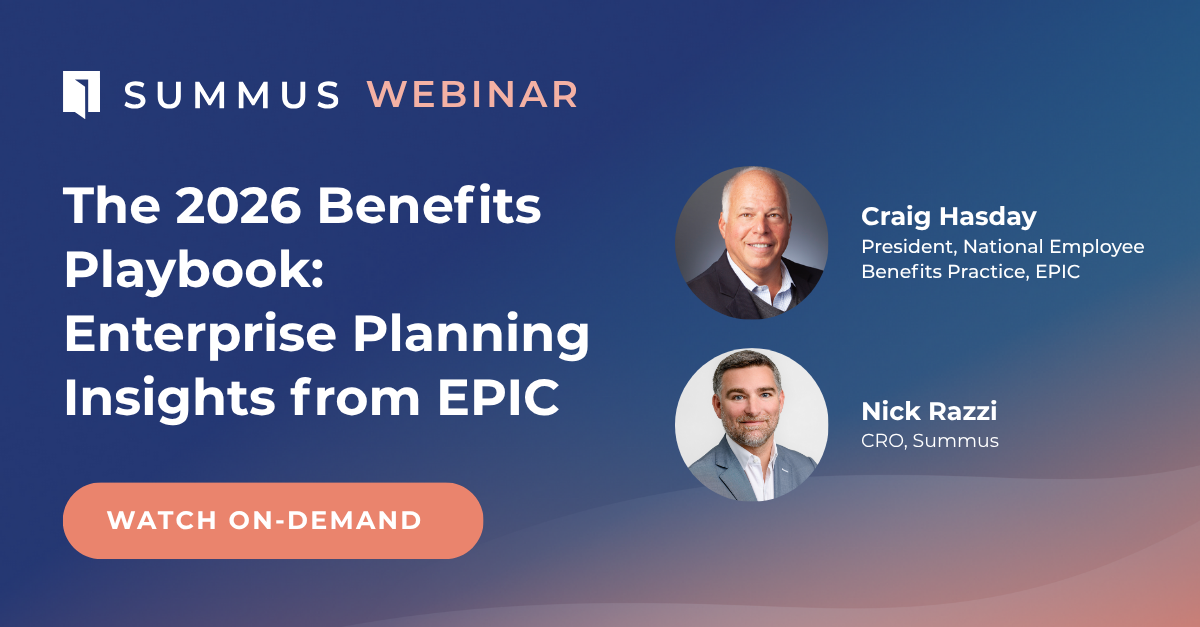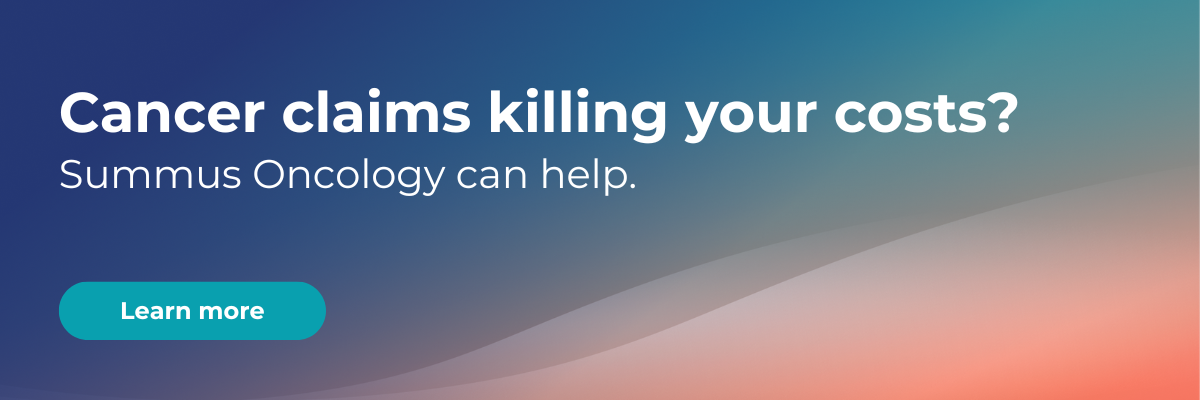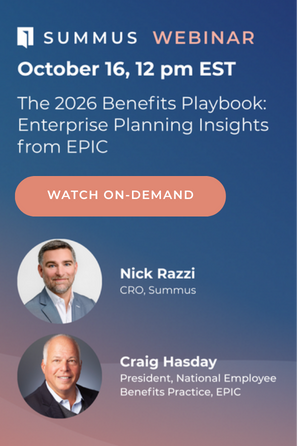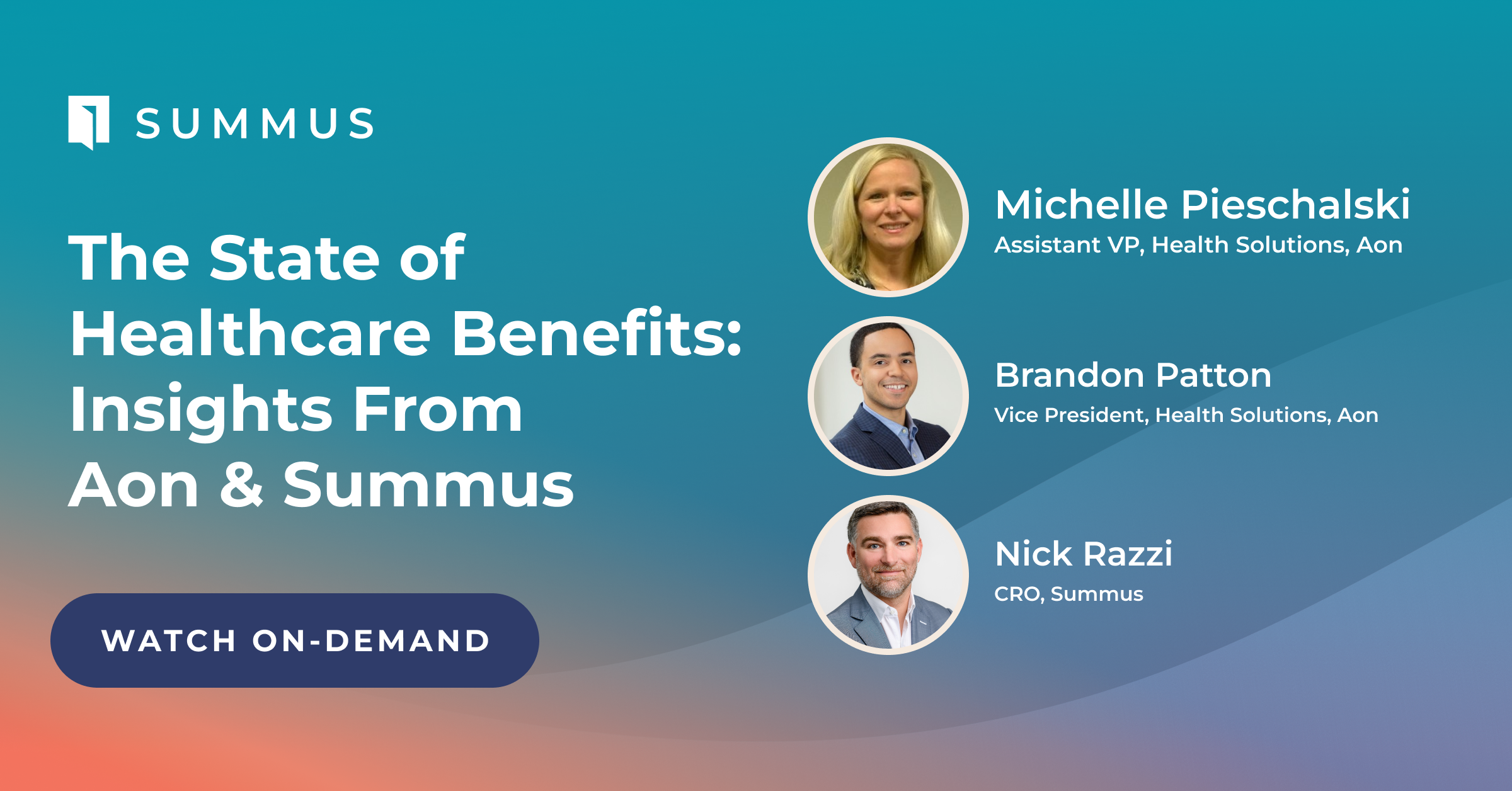As employers complete 2026 benefits planning, one thing is clear: this was one of the most difficult renewal seasons in recent memory. Rising healthcare costs, market resistance from carriers, and increasing employee expectations are reshaping how employers and consultants must think about benefits strategy.
In a recent webinar, The 2026 Benefits Playbook: Enterprise Planning Insights from EPIC and Summus, EPIC’s Craig Hasday, President of National Employee Benefits Practice, joined Nick Razzi, Chief Revenue Officer at Summus, to unpack what’s driving this year’s renewal challenges and how forward-thinking leaders can plan smarter.
Here are the biggest takeaways from their discussion.
1. “This year feels different” — Prepare for record-setting renewals
Craig Hasday noted that he’s seeing double-digit premium increases, up to 30% in some cases — unprecedented in his 30+ year career. Carriers are becoming more selective, “cherry-picking” the best risks and avoiding groups with large or emerging claims.
“I’ve never encountered a year like this where carriers are reluctant to even bid on programs,” Hasday said. “They’re clearly in the driver’s seat.”
For many employers, this means benefits costs are no longer just a line item. Rather, they’ve become a board-level discussion. The takeaway: employers must approach benefits planning with data, discipline, and a multi-year mindset.
2. Data is the most critical input
According to Hasday, data analytics is “the number one most critical factor” in renewal strategy.
Claims, participation, and demographic data — even in the absence of full claims transparency — should guide where employers focus.
“Every decision should be based on data,” he emphasized. “Not at the whim of whoever’s making it.”
For smaller employers without robust data, Hasday recommended leaning on participation and demographic trends to identify gaps, tailor communications, and inform plan design decisions.
3. Vendor fatigue is real, and consolidation is coming
Both speakers highlighted growing frustration among employers managing a patchwork of point solutions that don’t connect.
Hasday urged employers to “take inventory” and evaluate each vendor’s impact annually rather than adding new solutions without measuring ROI.
“It’s welcome when a consolidated partner can offer multiple solutions,” he said. “You can’t have a point solution for everything because it gets overwhelming.”
Platforms that integrate clinical navigation and specialty care, like Summus, are increasingly attractive because they simplify the employee experience while reducing administrative and cost burden.
As Hasday explained, interventions for high-cost conditions like oncology cannot be reactive. Employers must build pathways ahead of time, guiding members to the right care and specialists. While cost savings may not appear immediately, these programs deliver measurable impact over 2–3 years — improving outcomes and controlling unpredictable claims.
4. Communication is a year-round priority
Even the best benefits can fall flat if employees don’t understand or access them. Hasday cautioned that most employees only learn about their benefits during a rushed 20-minute open enrollment, leaving major programs underutilized.
“Knowledge is hard to disseminate. People often learn the hard way when they need the benefit.”
Employers should use ongoing, data-informed communication to close gaps between employer intent and employee perception. Look for trends in claims and participation to target outreach around underused benefits like fertility, wellness, or specialty care programs.
5. Align benefits to business goals, not just renewal rates
The most strategic employers link benefit design to workforce KPIs — like retention, attraction, and productivity — rather than treating benefits as a separate HR initiative.
Hasday recommended surveying employees and segmenting the population to understand who’s being reached (and who’s not).
“Are you trying to attract new young employees or retain existing talent? You have to know your priorities before you can design effectively.”
6. Move from reactive to multi-year planning
In today’s environment, “shopping around” for quick savings has reached its limit. Hasday called for employers to focus on long-term sustainability, not short-term fixes.
“The idea of bouncing from carrier to carrier has run out of gas. Employers need a macro-level strategy that makes renewals sustainable.”
That strategy may include exploring alternative pharmacy funding, integrated care models, or doctor-led navigation to reduce waste and improve outcomes over time.
The Bottom Line
Benefits strategy and planning demands a new level of rigor and realism. Employers can’t outbid the market, but they can outthink it. The organizations that win will be those that:
- Use data to guide every benefits decision
- Simplify and consolidate vendor ecosystems
- Communicate intentionally year-round
- Align benefit design with business and workforce goals
- Commit to a multi-year strategy for cost and care quality






